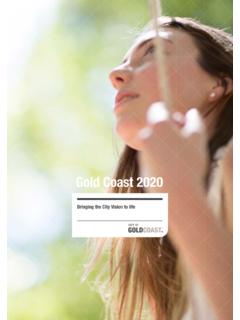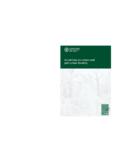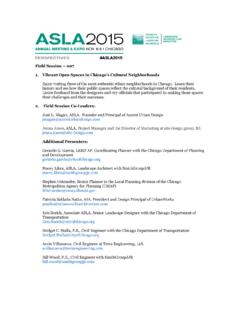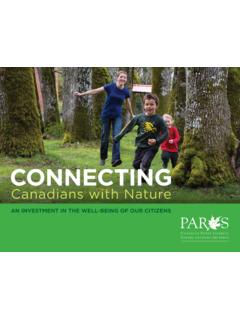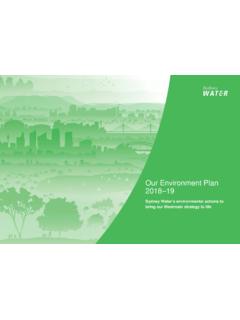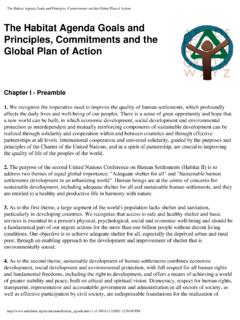Transcription of Transforming a City - El Caño
1 Transforming a CityPeople Health Environment GovernanceSan Juan, Puerto RicoOctober, 2014 Turning challenges into Assets As one of the wealthiest and most livable capital cities in the Caribbean, San Juan is full of con-trasts and possibilities. Nowhere is that more evident than in the eight marginalized commu-nities along the Ca o Mart n Pe a, a tidal chan-nel and main artery of the San Juan Bay Estuary. Despite their proximity to Puerto Rico s most important financial hub, the communities more than 26,000 residents nearly a tenth of the city s population- face a harrow-ing environmental and health crisis. The Ca o is clogged with debris, sediment, and organic waste.
2 The ENLACE Ca o Mart n Pe a Project is grounded in the enormous oppor-tunity to transform this challenge into an invalu-able economic, environ-mental, and recreational asset for the city , Puerto Rico, and the Caribbean. It embodies a transform-ative model under which empowered communi-ties are the protagonists of the region s compre-hensive development in partnership with the government, founda-tions, universities, and the private sector. Over 26,000 people reside in the 8 communities with the highest population density in Puerto Rico, located along the Ca o Mart n Pe Restored Ca o Mart n Pe a, A Livable city ENLACE was born in 2002 as a response to the dete-riorating conditions of the channel and the negative impact it has on the qual-ity of life in the neighbor-ing communities.
3 By dredging the Ca o Mart n Pe a, ENLACE seeks to recover and protect this extraordi-nary and unique natural resource, while provid-ing access to new green spaces, plazas, and walk-ways for residents and tourists to enjoy. A re-habilitated Ca o will al-low for the use of kayaks for recreation and water taxis for transportation to airports, cruise ports, hotels, the financial and the convention center districts, shopping malls, museums, parks, and historic neighborhoods located within 8 munic-ipalities in the San Juan Metropolitan Area. Safe, quality homes for the nearly 1,000 residents that need to be relocated, as well as improvements to vital infrastructure are central to achieve a just, equitable development.
4 Opportunities to shape this new city will emerge throughout its course. Three institutions lead the efforts to restore the channel and redevelop the area: the G-8, a com-munity based non-profit that brings together 12 grassroots organizations, the Corporaci n del Proyecto ENLACE del Ca o Mart n Pe a, a pub-lic corporation, and the The plan that is guiding the redevelopment of the area, which is the result of over 700 par-ticipatory planning activities in 2 years, re-ceived the 2009 American Planning Associa-tions Paul Davidoff National Award for Social Change and de la Tierra del Ca o Mart n Pe a, a community land trust.
5 ENLACE and its partners have come a long way in the realization of this vision, which entails an investment of $600M to implement key project components. 45 Inclusiveness and Participation, Productivity and WealthInclusiveness and partic-ipation are achieved by enhancing the potential of resident and community assets. ENLACE taps on the unrealized value of the land adjacent to the Ca o Mart n Pe a to address poverty, overcome mar-ginalization, and promote a more just, democratic city . It provides opportu-nities for residents, devel-opers and investors. Conscious of the strategic location of their commu-nities, residents chose to PeopleOver 10,000 residents have participated in more than 30 social development own 200 acres of land through the Fidei-comiso de la Tierra.
6 This in-novative land trust allows residents to benefit direct-ly from the rehabilitation of the Ca o and from im-provements to the area s dilapidated infrastructure. The Fideicomiso prevents gentrification, provides housing opportunities for families undergoing re-location, promotes long term affordability, and stimulates investment. To ensure that new in-vestments foster pro-ductivity and community -based economic devel-opment, ENLACE spurs the creation of several micro businesses led by residents and, when pos-sible, contracts them and encourages others to fol-low suit. This strategy is complemented by a wide range of initiatives to pro-mote critical thought and effective community or-ganizing.
7 These include adult literacy, education, environmental awareness, health promotion, financial education, conflict man-agement, and violence prevention programs. A variety of tools are used to engage residents of all ages as active agents of change who know and ex-ercise their rights. 6789 The severely degraded environmental condi-tions of the Ca o, the lack of sewage and ad-equate storm draining systems in the area, and discharges from other sectors of the city result in wastewater flooding. Frequently enough, rain translates into raw sew-age that enters homes, streets and, schools. Residents face serious health problems related to the constant exposure HealthThe prevalence of gastrointestinal disease in the Ca o over a 3 month period is times that of Puerto Rico in a full year.
8 Asthma prevalence among children under 5 doubles that of Puerto Rico for the same high concentrations of fecal coliforms and other contaminants. Epidemiological and health impact studies conducted by the Uni-versity of Puerto Rico, the Ponce School of Med-icine and Health Science, and the Icahn School of Medicine of Mount Sinai, New York, show alarm-ing levels of gastroen-teritis, asthma, and skin conditions among resi-dents living close to the Ca o or in contact with flood waters. ENLACE proposes sewer and storm drainage sys-tems, as well as new po-table water distribution systems. The dredging of the Ca o would sig-nificantly decrease the frequent flooding and remove trash and debris from the area.
9 Photo by Doel V zquez1011 The San Juan Bay Estu-ary is threatened by the dismal state of the Ca o Mart n Pe a. As the his-torically 200-foot wide navigable tidal chan-nel becomes a wetland that can be crossed by foot, the water no longer flows between the bay and the neighboring San Jos and Los Corozos lagoons. As the lagoons loose depth, neighbor-ing communities become vulnerable to floods. The lack of oxygen in the la-goons significantly re-duces biodiversity, limits marine life and impacts The San Juan Bay Estuary - the only tropical es-tuary under the US Environmental Protection Agency s National Estuary Program- is a criti-cal habitat to more than 300 amphibian, reptile, fish, and bird species, as well as 300 plant spe-cies, 17 of which are livelihood of many artisanal Estuary, where fresh waters from rivers meet the ocean, is home to 33% of the remaining mangroves in Puerto Rico.
10 They help protect the city from hurricanes and storm surges, and provide an important habitat for the reproduc-tion of numerous marine dredging of the Ca o Mart n Pe a will result in an environmental uplift of over 6,000 acres of estuarine ecosystems. By reconnecting the Es-tuary, the project will help healthy mangroves and coral reefs flourish, increase biodiversity, and in turn, enhance the potential for a Caribbean fisheries hotspot. As the Ca o s width is restored to 100 feet, San Juan, its people, as well as criti-cal infrastructure such as the Luis Mu oz Mar n International Airport will be more resilient and in better position to adapt to climate change.
